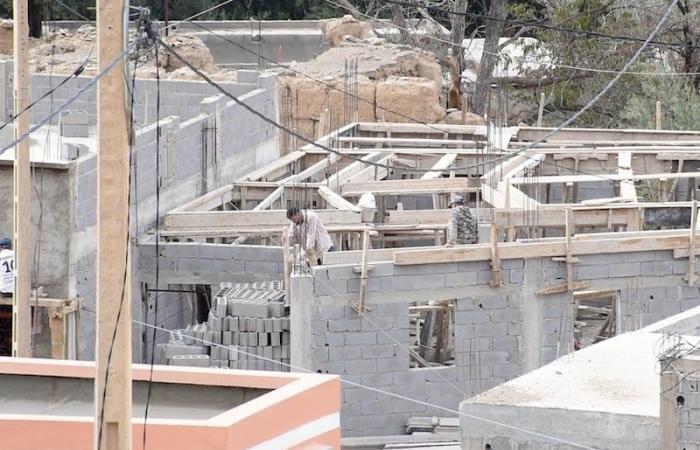After the September 8 earthquake devastated the inhabitants of the High Atlas, killing their loved ones, destroying their homes, and disrupting their livelihoods and lives, which were already marked by complex challenges, signs of life are returning to the villages of the affected areas in the Chichaoua province, which faced the current situation with an amazing degree of resilience, thanks to the early involvement of the regional vigilance committee to rehabilitate damaged roads, rebuild, open schools, and repair irrigation canals.
During a visit by the electronic newspaper Hespress to the Assif El Mal and Adasil communities, life can be observed gradually returning.
In this regard, Ourais Al-Hashemi, Head of the Equipment Department at the Chichaoua Province, said in a press statement, “In line with the royal directives, the regional authorities, in cooperation with the private sector and civil society, worked to improve traffic conditions and enhance road infrastructure, which helped meet the needs of the population who returned to their agricultural activities.”
He added, “The regional authorities have taken urgent measures to accelerate the rehabilitation of roads severely damaged by the earthquake in 32 communities, including 7 mountain communities, and to build new roads, as the road network is the lifeline of the population.”
On the outskirts of Douar Adasil, Al-Hashemi pointed out that “about 400 families from this hamlet were able to return to high-quality housing, out of 7,802 partially or completely damaged housing. At the education sector level, there are 51 educational institutions, out of 593 damaged educational units, ready to receive students during the current school year. As for the damaged health buildings (50), work has been completed on 18 clinics, 22 are under construction, 9 are in the open bid stage, and one is under study.”
As for the agricultural sector, which is the lifeblood and source of livelihood for the inhabitants of these mountain villages, Al-Hashemi confirmed “improving irrigation channels, with about 27 kilometers completed in 7 communities,” noting that “there is a significant investment allocated to the road infrastructure development program. In the Imindounit community, which is located in the High Atlas at an altitude of about 1,400 meters, the investment amounted to more than 400 thousand million dirhams to complete 4 road axes, one of which was completed before the earthquake, and three are currently being worked on, and have reached an advanced level thanks to the acceleration of the pace of work after the earthquake.”
As for the Ait Haddou Youssef community, a significant financial envelope has been allocated to rehabilitate it and break the isolation of many of its villages, with the start of construction works for 17 kilometers currently at a cost of nearly 28 million dirhams, reaching between 60 and 70 percent. It will also benefit from a financial envelope estimated at around 12 million and 500 dirhams. All this was achieved despite the difficulties and constraints such as the lack of professional labor, the provision of building materials, for which several points were allocated, and the opening of some roads. Despite this, the efforts of the vigilance committee, headed by the governor of the region, succeeded in overcoming them.”
In the village of Adasil in the district of Majjat, Hamid bin Adros, a resident of the village, expressed his “satisfaction with the gradual return of life, after the intervention of the Ministry of Agriculture, which provided fodder for farmers, and replaced those who lost their livestock with other livestock, which helped restore life and hope for farmers, who depend on agriculture and herding for their livelihood.”
Regarding reconstruction, Mustafa Khayat said, “The tents are gradually disappearing. A large percentage of the population lives in their new homes, which were built according to engineering standards that respect the culture of the region. Others are preparing, and a second group is under construction.”
It is noteworthy that the affected villages in the Chichaoua region are located at the epicenter of the earthquake because they are located in rugged areas in the High Atlas Mountains, which imposed a major challenge represented in paving roads, mobilizing all capabilities, and combining the efforts of everyone from officials, citizen contractors and civil society, which made it possible to continue rehabilitating the road and irrigation network, and rebuilding and repairing education and health institutions.






